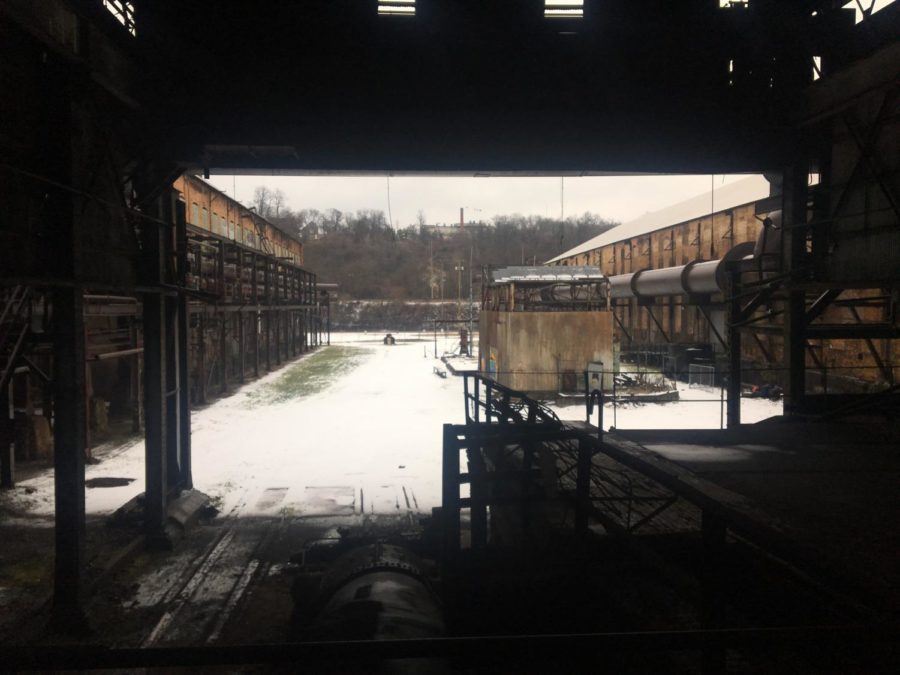TPN x Nazareth Prep | Rankin resident remembers steel industry
Written by high school students at Nazareth Prep, this story is part of a series about Rankin and Braddock.
William Sharkey worked at Carrie Furnace, pictured here, before the steel industry collapsed in Western Pennsylvania.
The steel industry was central to the economy of Pittsburgh for decades, and its collapse took a toll on the region’s economy and cost thousands of jobs. William Sharkey experienced this firsthand. A 66-year-old resident of Rankin, Sharkey currently works with General Electric, and shares his experience as a steelworker by doing tours of the Carrie Furnace in the Spring and Fall seasons.
Sharkey worked for U.S. Steel for 12 years from 1972-84 in an effort to afford a college education at the University of Pittsburgh. He worked in many different foreman positions over several locations in the Monongahela Valley, and at the time, the mill offered to pay half the tuition as he worked over the summer. He decided to stay for a second year in 1973 because the steel industry was doing well.
Inside of the Homestead Works, he was a vicing foreman, which is a foreman’s position in the steelworker’s union. Sharkey worked every foreman position — from being a labor foreman to a ladle house foreman. He spent most of his time working in the blast furnaces, specifically the Carrie Furnace No. 6, which still stands today.
“The furnace foreman is the toughest job in the mill,” he said. “Of course, it was like you were working in a cage of dynamite. 35 pounds of pressure all over the place. You could have a million gallons of water for cooling, and if it comes into contact with the molten iron, it would create one hell of an explosion.”
At the height of production, the Carrie Furnaces produced 9,000 tons of molten iron per day, according to Ron Baraff, the director of historic resources and facilities at Rivers of Steel.
U.S. Steel moved Mr. Sharkey’s position up to furnaces No. 3 and No. 4 in Rankin before shutting down Carrie Furnaces No. 6 and No. 7 in 1978. The furnaces continued to operate until March 1982, when No. 3 and No. 4 shut down.
While the Carrie Furnace was shutting down, Sharkey said, three-fourths of the management that was not laid off was sent to work in the Edgar Thomson Steel Works in Braddock. The Edgar Thomson Works is an integrated steel plant, which includes the entire process of steel casting, beginning with iron smelting, then converting the iron into liquid steel and finally converting the molten steel into usable metal.
“In March of 1982, we did a lot work on the piping of the furnaces, because they were shut down at the time while we were in there,” Sharkey said.
During Sharkey’s time at Edgar Thomson, U.S. Steel began cutting its management by 60 percent every year, he said.
Sharkey was two semesters away from graduating from Pitt when he was laid off from U.S. Steel. He then went to Pitt as a full time student, obtaining a degree in information science and going into technical support. He moved to Braddock in 2008 and worked for Liberty Power Recycling until 2012.
For Sharkey and thousands of people like him, the death of the steel industry was a difficult transition. When the steel industry collapsed, Sharkey said the “life and blood” of the region was gone.
“For every one job in the mill, there was potentially 10 jobs supporting it from outside the mill,” he said.







